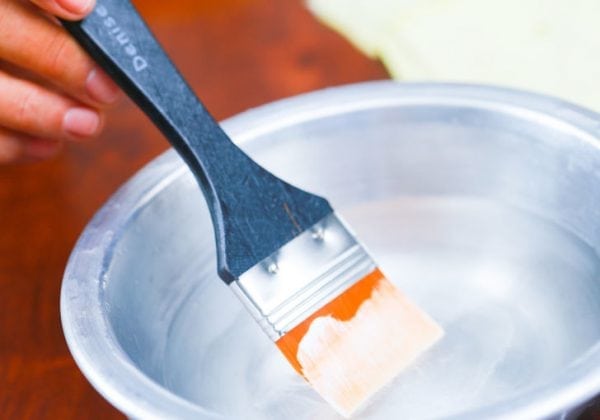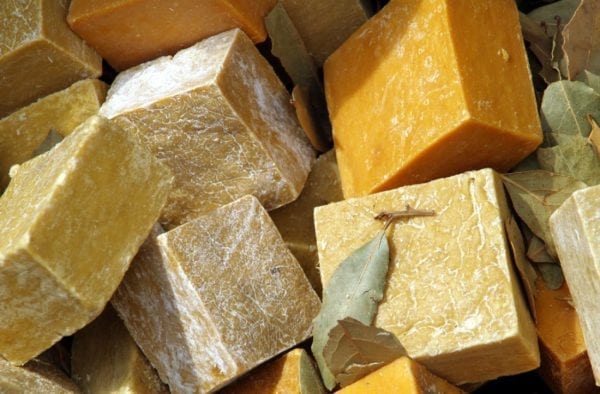If you yourself have done the painting work at home, you need to know how to clean the brushes after painting. Depending on the type of paint used, cleaning methods may differ from each other, so we will consider each of them in detail.
- What types of brushes are used during painting
- Work interruption - we save tool properties
- We clean tools during a long break
- Other methods

Proper and timely brush cleaning will help you keep these tools in working condition for a long period. Therefore, this process should be given proper attention and the right choice of cleaning agents.
to contents ↑What types of brushes are used during painting
Every person who at least once made repairs in the apartment on their own is well aware that several different types of brushes are required to perform quality work. So, the primer of surfaces, the painting of ceilings and walls of a room using water-soluble acrylic agents requires the use of large planar flat brushes. To work with oil and some other types of paints, small round or flat brushes, which are called fleets, are quite suitable.

In any painting process, there are certain breaks during which the functional properties of the brushes must be preserved in their original state - this will help to avoid the need to purchase a new product, save you money and time.
to contents ↑Work interruption - we save tool properties
So that after a 1-2-hour break in staining, the brush does not have time to lose its properties, it is necessary to take care of it correctly.
There are quite a few types of paints and varnishes that set very quickly, and therefore the brush that was ignored in just a couple of hours will be completely covered with a sticky layer, which is almost impossible to remove.
Sometimes this option is practiced - a brush with a pile down is placed in a jar filled with water.
However, this method has one significant drawback - although the pile will be saved from thickening the paint, it will become too harsh, which will make the quality of further painting work not so high.
Therefore, instead of a container with water, it is better to use a regular plastic bag or thin food-grade aluminum foil. To do this, wrap the brush with any of these materials so that the air does not get inside. This affordable method will allow you to save the properties of the brushes for two hours.
to contents ↑We clean tools during a long break
If the break between the stages of the paintwork is longer, at least one day, the brushes need to provide other care. After painting, leaving them in a jar of solvent for a day is not the best method, since it can lead to deformation of the pile, which will make the subsequent painting process impossible.Therefore, you have to wash the tool in accordance with all the rules using special tools. If you do not have a professional brush cleaner, prepare the following set of accessories:
- any paint thinner;
- disposable paper towel or piece of soft rag;
- ordinary laundry soap;
- deep enough capacity for immersion brushes.
To thoroughly wash the brushes after the paint and provide them with proper care, you should perform several actions:
- Pour enough solvent into the container.
- Place the brush in the product with the pile down and thoroughly soak the pile.
- After that, remove the brush and wipe it thoroughly using a rag or paper towel.
- Then the bristles of the products need to be thoroughly smeared with soapy foam and washed under running water for several minutes.
All these steps should be repeated until the pile is completely cleaned of paints and varnishes. This method of care allows you to qualitatively wash the paint, even if it has dried.
Depending on the type of paint used, you need to wash the brushes with different types of solvents. Paints and varnishes having a water-soluble or adhesive base can be washed with plain water.
And if you have to wash the brush after applying oil paint, you should use a special mineral solvent.
Due to the fact that the liquid for cleaning brushes and solvents are products with too strong and specific odors, it is advisable to wash these products on the balcony or in the open air. After the procedure is completed, the brush must be thoroughly dried by placing it in an upright position with the bristle up.
to contents ↑Other methods
There are other time-tested brush care methods that are very effective. If the paint has not completely dried up to the pile, you can wash it with a conventional linen conditioner:
- Getting to the procedure, you need to use a soft cloth to wipe off excess paint.
- Then mix the air conditioning and warm water in equal parts.
- Wash the brush thoroughly in the solution until the paint begins to gradually slide away from it.
- To consolidate the result, continue to wash the product in warm running water.
- When there are no traces of paint left at all, the product must be thoroughly dried by installing it in a small jar with a pile up.
If the paint is very dry, try another method:
- In a convenient container, for example, glass, pour the right amount of vinegar and put the brush there for one hour.
- When this period has passed, check how soft the paint has softened.
- In the event that the paint is not sufficiently softened, leave the brush in this position for another hour.
- At the next stage, take an old saucepan unsuitable for food purposes and pour vinegar into it.
- Then put the brush in the pan, put on the stove, set the average flame level and wait for it to boil.
- For several minutes, the contents of the container should continue to boil.
- Next, remove the cleaned brush and carefully comb its pile with a metal brush.
- The brush must be combed until the smallest particles of paint are completely behind the villi.
- Finally, the product must be rinsed in running water and left to dry in a vertical position with a pile up.
Regardless of the method of cleaning, proper brush care implies mandatory moistening of the pile. For these purposes, any cosmetic conditioner or lotion is suitable. Proper storage of brushes also plays an important role and helps to preserve their properties for as long as necessary.







